Top Features to Look for in Ecommerce Chatbots
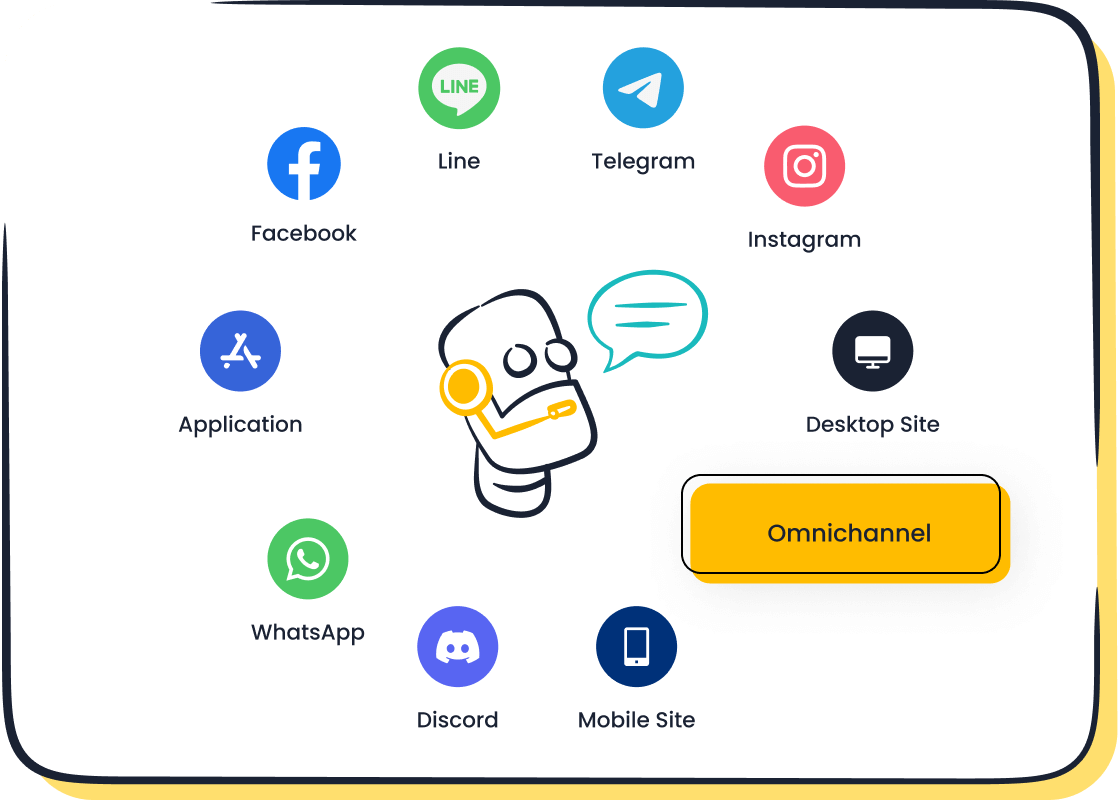
Imagine a world where your customers receive instant responses, personalized recommendations, and seamless shopping experiences—all without human intervention. This is the transformative power of an ecommerce chatbot. With 70% of online shoppers preferring chatbots over human agents to avoid wait times, these tools have become indispensable for businesses like yours. Companies using the best ecommerce chatbots report up to a 30% reduction in operational costs and significantly improved customer support ratings.
Chatbots are not just about efficiency; they elevate customer service by ensuring 24/7 availability. For example, Sobot’s chatbot platform offers multilingual capabilities and omnichannel support, enabling you to interact with customers across their preferred platforms. As 72% of business leaders prioritize AI and chatbots, integrating such tools positions your ecommerce business for long-term growth.
AI and NLP Capabilities in Ecommerce Chatbots
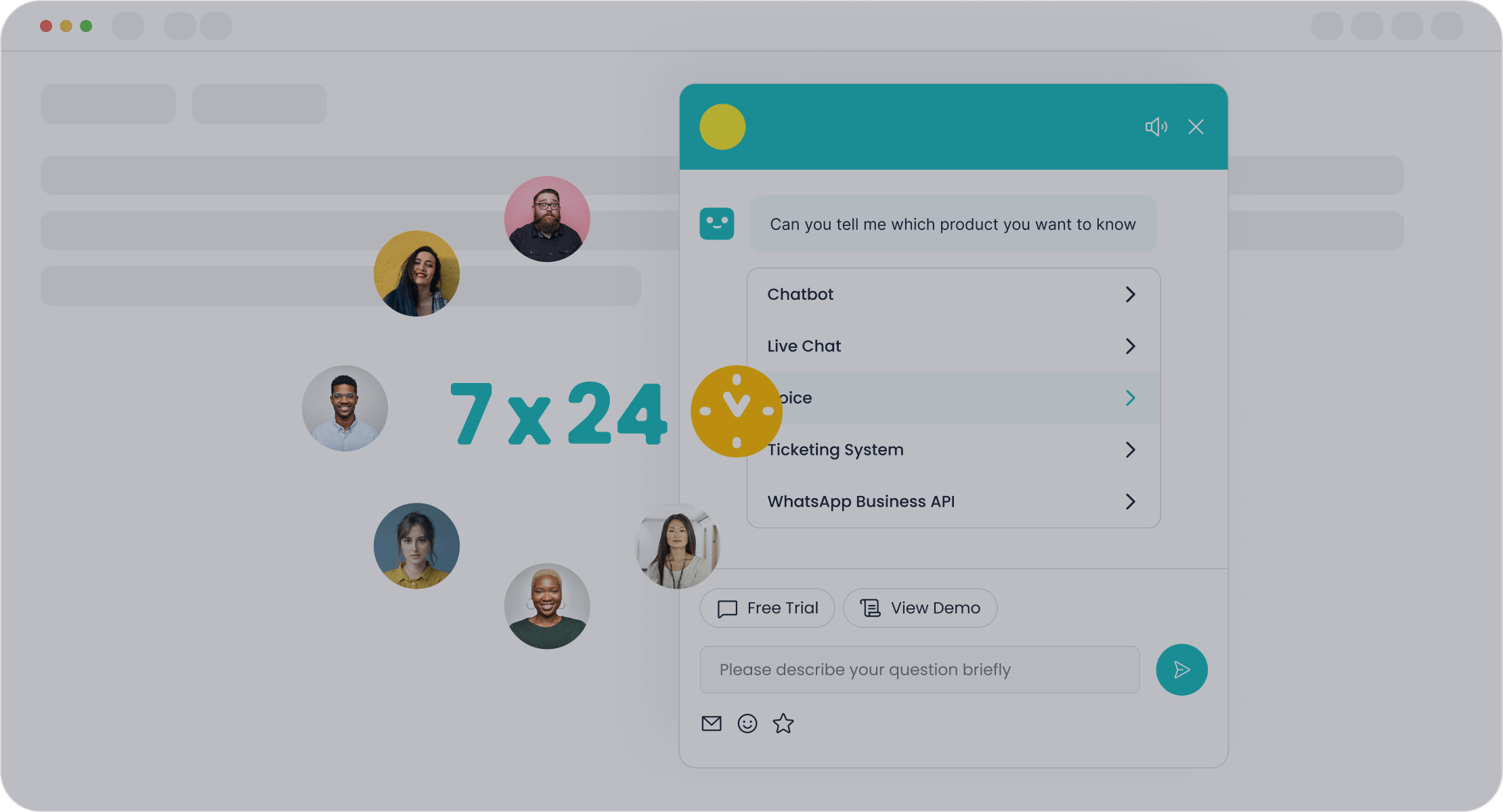
Understanding AI and NLP in chatbots
AI and NLP form the backbone of modern chatbots, enabling them to understand and respond to human language effectively. AI chatbots analyze customer queries, identify intent, and provide accurate responses. NLP, a subset of AI, processes text or speech to make interactions more natural and conversational. For example, Sephora’s Virtual Assistant uses NLP to assist customers with product searches and returns, creating a seamless shopping experience.
These technologies also reduce response times significantly. While traditional customer service may take hours, AI chatbots resolve queries in just minutes. This efficiency not only enhances customer satisfaction but also lowers operational costs by up to 30%. As ecommerce evolves, future conversational chatbots will likely include advanced features like emotion recognition and multilingual support, further improving their ability to meet diverse customer needs.
Enhancing customer interactions with AI-driven personalization
Personalization is key to building strong customer relationships. AI chatbots excel in this area by analyzing customer data to deliver tailored recommendations. For instance, an online fashion retailer’s NLP chatbot increased average order value by 20% through personalized product suggestions. Similarly, H&M’s chatbot assists customers with sizing and order tracking, ensuring a smooth shopping journey.

AI-driven personalization doesn’t just improve sales; it also boosts customer loyalty. By offering relevant suggestions and proactive assistance, chatbots create a more engaging experience. Sobot’s chatbot platform, for example, uses AI to provide real-time intent assistance, helping businesses increase conversions by 20%. This level of personalization transforms casual shoppers into repeat customers.
Real-world applications of NLP in ecommerce
NLP has revolutionized how businesses interact with customers. It enables chatbots to understand context, making conversations more meaningful. For example, Amazon’s AI chatbot allows voice-based shopping, while Delta Airlines’ chatbot provides real-time flight updates. These applications showcase the versatility of NLP across industries.
In ecommerce, NLP-powered chatbots handle tasks like answering FAQs, tracking orders, and managing returns. They also support multilingual interactions, catering to global audiences. According to industry data, retail chatbots have driven a 67% increase in sales, with projected ecommerce transactions reaching $142 billion by 2025. These figures highlight the growing importance of NLP in enhancing customer experiences and driving business growth.
Seamless Integration with Ecommerce Systems
Importance of integration with CRM, inventory, and payment systems
Integrating your chatbot with CRM, inventory, and payment systems is crucial for delivering a seamless customer experience. A well-integrated chatbot can access customer data, purchase history, and preferences stored in your CRM. This allows you to offer personalized recommendations and resolve queries faster. For example, businesses using CRM integration have reported improved customer loyalty and satisfaction due to tailored interactions.
Inventory integration ensures that your chatbot provides real-time updates on product availability. This prevents customer frustration caused by out-of-stock items. Payment system integration, on the other hand, simplifies the checkout process. Customers can complete transactions directly through the chatbot, reducing cart abandonment rates. Companies like Cartamundi and Macromex have successfully enhanced their ecommerce platforms by integrating advanced functionalities, leading to higher conversion rates and operational efficiency.
Ensuring compatibility with existing ecommerce platforms
Your chatbot must work seamlessly with your existing ecommerce platforms like Shopify, Magento, or WooCommerce. Compatibility ensures smooth operation and accurate data synchronization across systems. For instance, Voiceflow integrates with Shopify to provide real-time inventory updates and order tracking, enhancing customer service.
Key features to look for include the ability to connect with multiple tools and platforms. This eliminates the need for manual data entry and reduces errors. A compatibility test report highlights that chatbots maintaining accurate information across systems significantly improve operational efficiency. Ensuring this compatibility is essential for scaling your ecommerce business effectively.
| Feature | Description |
|---|---|
| Integration | The chatbot connects smoothly with platforms like Shopify and WooCommerce. |
| Accuracy | Maintains accurate information across systems, reducing manual toggling. |
How Sobot Chatbot simplifies system integration
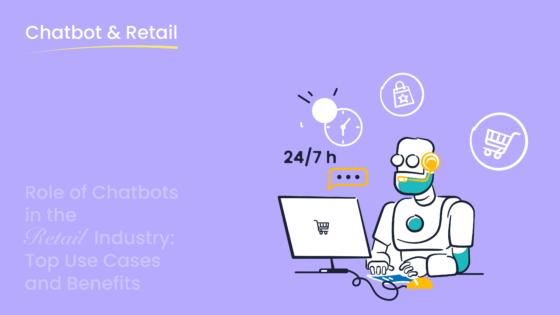
Sobot’s chatbot platform excels in seamless integration with ecommerce systems. It connects effortlessly with CRM tools, inventory databases, and payment gateways. This allows you to automate processes and reduce manual data handling. For example, Sobot’s chatbot can pull customer details from your CRM to provide personalized responses. It also updates inventory levels in real time, ensuring accurate product availability information.
The platform’s omnichannel support enables smooth communication across multiple platforms like WhatsApp and SMS. Its no-coding-required setup makes integration simple, even for non-technical users. By synchronizing data across systems, Sobot’s chatbot enhances operational efficiency and improves customer satisfaction. This makes it an ideal choice for businesses looking to streamline their ecommerce operations.
Customization for Brand Identity

Why customization is essential for ecommerce businesses
Customization plays a vital role in helping ecommerce businesses stand out in a crowded marketplace. By tailoring customer interactions, you create a personal connection that fosters loyalty and repeat purchases. Studies show that personalization meets consumer expectations and enhances user experience, which is crucial for building strong customer relationships. For example, brands like Nike and L.L.Bean have successfully increased engagement and loyalty by offering personalized products and experiences.
Customization doesn’t just differentiate your brand; it turns casual buyers into loyal advocates. When customers feel valued through tailored interactions, they are more likely to develop long-term relationships with your business. This approach also creates a sense of exclusivity, making your brand memorable in the competitive ecommerce landscape.
Features to look for in customizable chatbots
When choosing a chatbot for your ecommerce business, look for features that support personalized customer experiences. These features ensure your chatbot aligns with your brand identity and enhances customer satisfaction. Key features include:
- 24/7 Customer Support: Chatbots available round-the-clock build trust and reliability.
- Multilingual Support: Communicate effectively with a global audience.
- Personalized Experiences: Use customer data to tailor responses and foster loyalty.
- Sentiment Analysis: Detect emotional states to create empathetic interactions.
- Integration with CRM Systems: Access customer information seamlessly for efficient workflows.
| Feature | Description |
|---|---|
| 24/7 Customer Support | Ensures availability at all hours, improving customer trust. |
| Multilingual Support | Enables communication with diverse audiences. |
| Personalized Experiences | Makes interactions engaging and human-like. |
| Sentiment Analysis | Adjusts responses based on emotional cues for better experiences. |
| Integration with CRM Systems | Facilitates quick access to customer data for tailored support. |
How Sobot Chatbot supports tailored customer experiences

Sobot’s chatbot platform excels in delivering personalized customer experiences. It uses AI-driven insights to analyze customer data and provide tailored responses. For instance, Sobot’s chatbot can recommend products based on browsing history or assist with order tracking in real time. Its multilingual capabilities allow you to connect with customers worldwide, while sentiment analysis ensures empathetic interactions.
The platform’s no-coding-required setup makes customization simple, even for non-technical users. You can design workflows that reflect your brand’s tone and style, ensuring consistent communication across all channels. By integrating seamlessly with CRM systems, Sobot’s chatbot enables efficient data sharing, helping you deliver personalized support that strengthens customer loyalty.
Scalability for Growing Ecommerce Businesses
The importance of scalability in handling increased traffic
As your ecommerce business grows, so does the volume of customer interactions. A scalable chatbot ensures you can handle this increased traffic without compromising service quality. During peak sales seasons, such as Black Friday or holiday shopping, traffic spikes can overwhelm traditional customer support systems. Scalable chatbots excel in these situations by managing thousands of conversations simultaneously.
- 24/7 Instant Answers, No Waiting: Chatbots provide immediate responses, reducing cart abandonment caused by delays.
- Handling Peak Volume with Ease: They maintain consistent service quality, even during high-traffic periods.
- Reducing Cart Abandonment: By addressing last-minute questions, chatbots help convert hesitant shoppers into buyers.

Sobot’s chatbot platform is designed to scale effortlessly. It operates 24/7, ensuring your customers always receive timely assistance, even during the busiest times.
Features that enable chatbots to grow with your business
When selecting a chatbot, look for features that support your business's growth. These features ensure the chatbot adapts to your evolving needs:
- Omnichannel Support: Engage customers across platforms like WhatsApp, SMS, and social media.
- Multilingual Capabilities: Communicate effectively with a global audience.
- AI-Driven Insights: Use data to optimize performance and improve customer interactions.
- Customizable Workflows: Tailor the chatbot to reflect your brand identity.
- Seamless Integration: Connect with CRM, inventory, and payment systems for efficient operations.
Sobot’s chatbot includes all these features, making it a reliable choice for growing ecommerce businesses. Its no-coding-required setup allows you to scale quickly without technical expertise.
Evaluating scalability during vendor selection
Choosing the right chatbot vendor requires careful evaluation of scalability features. Comparing solutions helps you identify the best fit for your business. Here’s a quick comparison:
| Chatbot Solution | Pros | Cons |
|---|---|---|
| Flow XO | * User-friendly UI for customization | * Requires third-party integrations for complex tasks |
| LiveChat | * Speedy responses and customizable designs | * Costs increase with usage |
| Olark | * Ideal for small businesses with searchable chat transcripts | * Limited scalability features |
| LivePerson | * Advanced AI technology for superior experiences | * Lack of transparent pricing |
Sobot stands out with its robust scalability, seamless integrations, and AI-driven capabilities. Its ability to handle high traffic and adapt to your business needs makes it a top choice for ecommerce businesses.
Data Security and Privacy in Ecommerce Chatbots
Protecting customer data in ecommerce transactions
Customer data is the backbone of ecommerce operations, making its protection a top priority. When customers share sensitive information like payment details or personal preferences, they expect it to remain secure. Regulations such as GDPR and CCPA enforce strict guidelines to ensure businesses handle this data responsibly. For example, GDPR mandates transparency and customer consent, while PCI-DSS requires encryption of credit card data to prevent fraud.
| Compliance Standard | Key Requirements | Implications |
|---|---|---|
| PCI-DSS | Encrypt credit card data, secure network configurations | Reduces risk of fraud, essential for payment handling |
| GDPR | Ensure transparency, consent, and data access rights | Non-compliance can lead to fines up to €20 million |
| CCPA | Provide California residents control over personal data | Builds trust and applies to businesses handling U.S. data |
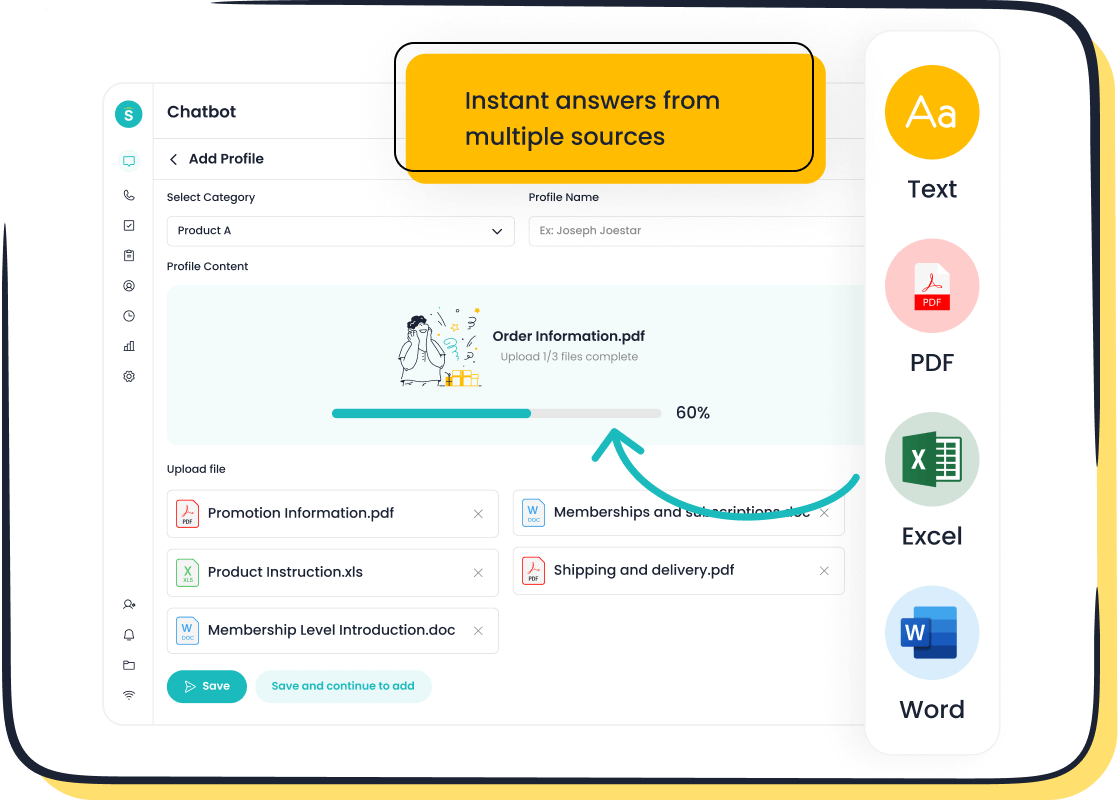
Sobot’s chatbot platform adheres to these standards, ensuring your ecommerce chatbot operates securely. By encrypting data both at rest and in transit, Sobot minimizes risks and builds customer trust.
Key security features to prioritize
When selecting a chatbot, prioritize features that safeguard customer data. These include:
- Encryption: Protect sensitive data during storage and transmission.
- Privacy Controls: Allow users to manage their data, aligning with GDPR and CCPA.
- Constant Monitoring: Regularly track vulnerabilities to maintain security.
- Compliance: Ensure adherence to regulations like GDPR and HIPAA.
- Misinformation Prevention: Reduce risks of spreading false information.
These features not only protect your customers but also enhance their confidence in your customer support. Sobot’s chatbot integrates these capabilities, offering a secure and reliable solution for ecommerce businesses.
How Sobot ensures compliance with data protection regulations
Sobot takes data security seriously. Its chatbot platform complies with global standards like GDPR, PCI-DSS, and CCPA. By encrypting customer data and providing tools for consent management, Sobot ensures your business meets regulatory requirements. Additionally, Sobot conducts continuous monitoring to identify and address vulnerabilities, keeping your chatbot secure.
Sobot’s commitment to compliance extends to its AI-driven insights. These insights help you optimize customer service without compromising data privacy. For example, Sobot’s encrypted backups and GDPR-compliant features empower you to handle customer interactions responsibly. This approach not only protects your business from penalties but also strengthens customer loyalty.
Analytics and Reporting for Ecommerce Success
Leveraging analytics to optimize chatbot performance
Analytics play a crucial role in improving your chatbot’s performance. By analyzing user interactions, you can identify patterns, refine conversation flows, and enhance customer satisfaction. For example, tracking response times helps you ensure that your chatbot delivers quick and accurate answers. Faster responses not only improve user experience but also increase engagement rates.
Key metrics like conversation completion rates and escalation patterns provide insights into how well your chatbot resolves queries. A high resolution rate indicates that your chatbot effectively handles customer needs without human intervention. For instance, Sobot’s chatbot uses AI-driven insights to monitor these metrics, enabling businesses to optimize workflows and reduce operational costs.
Tip: Regularly review analytics to identify areas for improvement. This ensures your chatbot evolves with customer expectations, maintaining its effectiveness over time.
Key metrics to track for ecommerce growth
Tracking the right metrics is essential for driving ecommerce success. Here are some key metrics to monitor:
- User Engagement Rate: Measures how many users interact with your chatbot. A rate of 35-40% indicates strong engagement.
- Task Completion Rate: Tracks the percentage of successful interactions. A rate above 70% reflects an effective chatbot.
- Conversion Lift: Compares sales with and without chatbot interactions, showcasing its impact on revenue.
- Customer Satisfaction (CSAT): Gauges user happiness with chatbot interactions. High scores indicate positive experiences.
- Cost Savings: Quantifies the reduction in support costs due to chatbot automation.
For example, Sephora achieved an 11% increase in makeover bookings after implementing a chatbot. Similarly, Domino’s Pizza saw a 50% rise in digital orders, demonstrating the business impact of tracking these metrics.
| Metric Category | Key Metrics | Business Impact |
|---|---|---|
| User Engagement | Engagement Rate, Retention | Higher satisfaction, increased loyalty |
| Operational Efficiency | Resolution Rate, Handling Time | Reduced costs, streamlined operations |
| Business Growth | Conversion Lift, CSAT | Boosted revenue, improved customer experience |
Actionable insights provided by Sobot Chatbot
Sobot’s chatbot offers advanced analytics to help you make data-driven decisions. It tracks metrics like user engagement, sentiment scores, and task completion rates. These insights allow you to identify pain points and refine your chatbot’s responses. For example, Sobot’s platform analyzes escalation patterns to reduce the need for human intervention, improving efficiency.
The chatbot also provides detailed reports on conversion rates and customer satisfaction. These reports help you measure the chatbot’s impact on your ecommerce business. With Sobot, you can monitor cost savings and optimize workflows, ensuring your chatbot delivers maximum value. Its user-friendly dashboard makes it easy to access and act on these insights, empowering you to drive growth and enhance customer experiences.
User-Friendliness for Customers and Teams
Why ease of use is critical for ecommerce chatbots
A user-friendly chatbot is essential for creating positive experiences for both customers and your team. When customers interact with an intuitive chatbot, they can quickly find answers to their questions, reducing frustration and improving satisfaction. For your team, a simple interface streamlines operations, allowing them to focus on more complex tasks.
User-friendly ecommerce chatbots also enhance efficiency. They automate routine interactions, provide instant responses, and handle high volumes of requests. This reduces wait times and alleviates pressure on human agents. As a result, your business can grow while maintaining excellent customer service.
- User-friendly chatbots improve customer support.
- They enhance efficiency in managing inquiries.
- These tools contribute to overall business growth.
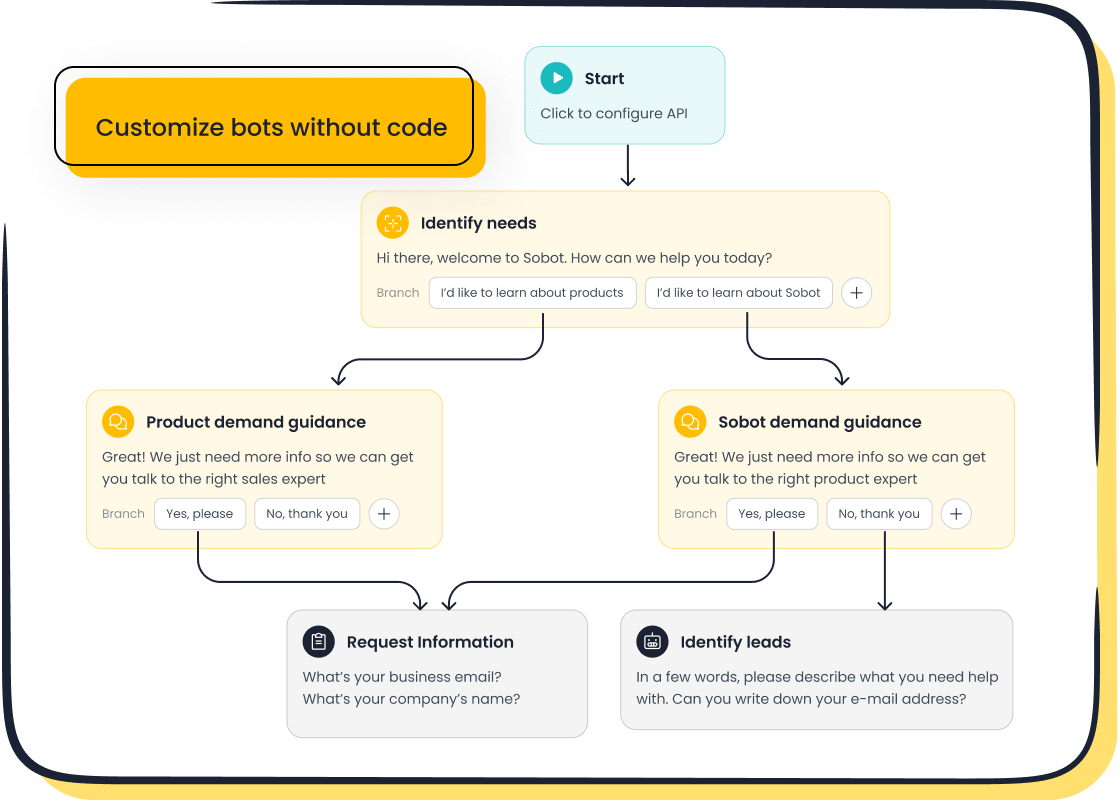
Sobot’s chatbot platform exemplifies user-friendliness. Its no-coding-required setup allows you to design workflows effortlessly. This ensures that both customers and team members can navigate the system with ease.
Features that enhance user experience
Certain features make a chatbot more user-friendly and effective. These include:
- Simplicity in Design: A clean and straightforward interface helps users navigate easily.
- Responsive Design: Immediate feedback fosters seamless interactions.
- Accessibility: Compatibility with screen readers ensures inclusivity.
- Error Handling: Clear messages guide users back on track when issues arise.
- Multilingual Support: Communicating in multiple languages broadens your audience.
Sobot’s chatbot incorporates all these features. For example, its multilingual capabilities allow you to connect with global customers, while its responsive design ensures smooth interactions across platforms like WhatsApp and SMS.
Testing and optimizing chatbot interfaces
Testing is crucial for ensuring your chatbot delivers the best user experience. User testing and analytics help identify pain points in interactions. By understanding why users drop out, you can make informed decisions to improve usability. A/B testing can also reveal which chatbot versions perform better.
Regular testing with real users uncovers potential issues and areas for improvement. Conduct usability tests to gather feedback on the chatbot’s interface and performance. Use this feedback to refine the design and enhance the overall experience.
To optimize your chatbot, follow these steps:
- Conduct exploratory interviews to gather insights.
- Script interactions to guide user testing scenarios.
- Perform pre-production testing to identify issues.
- Engage in iterative testing during production.
- Analyze results to inform further improvements.
Sobot’s chatbot platform simplifies this process. Its analytics tools track user engagement and task completion rates, providing actionable insights. This ensures your chatbot evolves to meet customer expectations, driving better results for your ecommerce business.
Cost and ROI of Ecommerce Chatbots
Factors influencing the cost of chatbots
The cost of deploying a chatbot depends on several factors. The type of chatbot you choose plays a significant role. Basic rule-based chatbots are more affordable, while AI-powered chatbots with advanced features like natural language processing (NLP) and sentiment analysis require higher investments. Complexity also impacts costs. Chatbots designed to handle intricate workflows or integrate with multiple systems demand more resources.
Customization adds another layer to expenses. Tailoring a chatbot to reflect your brand identity or meet specific business needs increases development time and costs. Integration with existing systems, such as CRM or inventory platforms, may require custom development, further raising expenses. Ongoing maintenance is another consideration. Managed solutions often come with higher fees but provide expert support, saving costs in the long run.
| Factor | Description |
|---|---|
| Types of chatbots | Costs vary based on functionalities, from basic to AI-powered solutions. |
| Complexity | Advanced features and workflows require more resources. |
| Customization | Tailored designs increase development time and costs. |
| Integrations | Connecting to systems like CRM may involve custom development. |
| Ongoing maintenance | Managed solutions offer expert support but may have higher fees. |
Calculating ROI for ecommerce chatbot investments
Determining the return on investment (ROI) for your ecommerce chatbot involves analyzing cost savings and revenue gains. Start by calculating savings from deflected tickets and improved operational efficiencies. Measure additional income generated through enhanced conversions or upselling opportunities. Assign financial value to customer satisfaction improvements, such as higher Net Promoter Scores (NPS).
Use the formula (Net Benefit / Total Costs) * 100 to express ROI as a percentage. For example, if your chatbot saves $50,000 annually and costs $20,000 to implement, the ROI is 150%. Break-even analysis helps determine when benefits equal costs, while payback period calculations show how quickly your investment pays off. Businesses using chatbots report faster complaint resolution, with 90% seeing quicker outcomes. This efficiency boosts customer satisfaction and drives long-term growth.
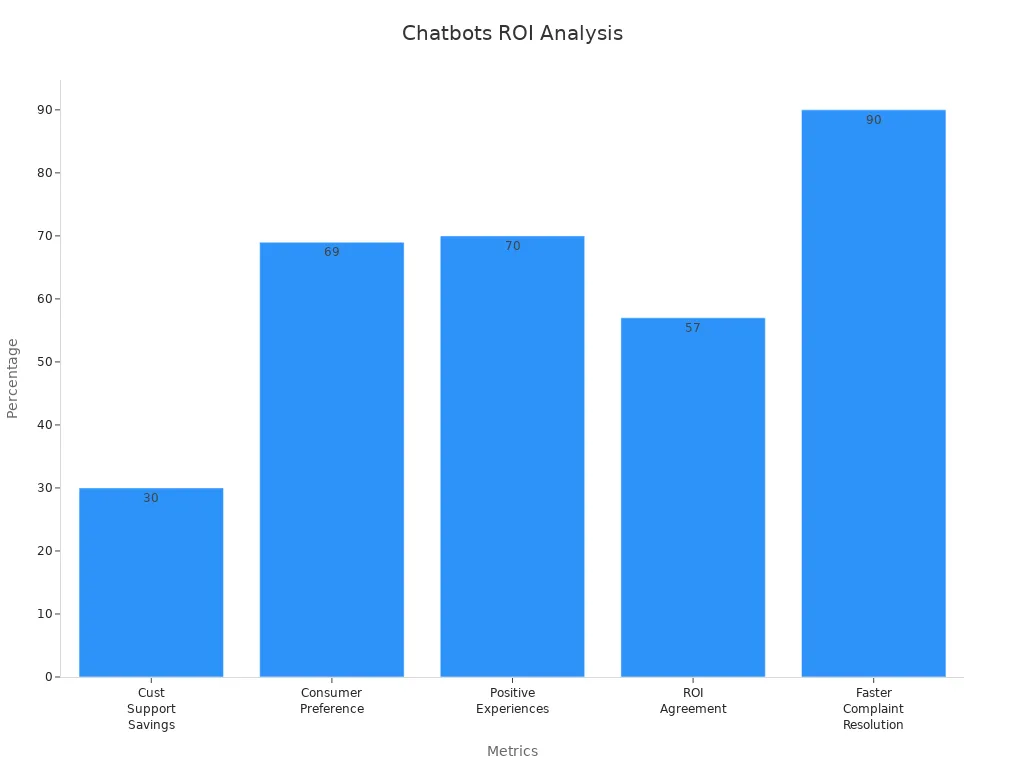
Balancing affordability and functionality with Sobot Chatbot

Sobot’s chatbot platform strikes the perfect balance between affordability and functionality. Its no-coding-required setup reduces implementation costs, making it accessible for businesses of all sizes. The platform operates 24/7, saving up to 50% on customer support expenses. Its AI-driven insights boost conversions by 20%, delivering measurable ROI.
Sobot’s chatbot integrates seamlessly with CRM, inventory, and payment systems, eliminating the need for costly custom development. Its multilingual capabilities and omnichannel support enhance user engagement, ensuring a positive customer service experience. By combining cost-effective deployment with advanced features, Sobot helps businesses achieve significant operational savings and revenue growth.
Evaluating Chatbot Providers for Ecommerce
Questions to ask when assessing chatbot vendors
Choosing the right chatbot provider is a critical decision for your ecommerce business. Asking the right questions ensures you select a solution that aligns with your goals. Start by evaluating the provider’s experience in delivering the best ecommerce chatbots. Ask about their track record in handling high traffic and their ability to integrate with your existing systems like CRM and payment platforms.
Inquire about the chatbot’s performance metrics. Key metrics include the containment rate, which measures how many queries the chatbot resolves without human intervention, and the first contact resolution rate, which reflects its ability to solve issues in a single interaction. For example, a high containment rate reduces operational costs, while a low escalation rate minimizes the need for human agents. Use the table below to guide your evaluation:
| Metric | Description |
|---|---|
| Number of Interactions | Tracks total customer interactions to gauge adoption and engagement. |
| Containment Rate | Percentage of conversations handled by the chatbot without human intervention. |
| First Contact Resolution | Assesses the chatbot’s ability to resolve issues in the first interaction. |
| Escalation Rate | Percentage of sessions requiring human intervention; lower is better. |
| Error/Confusion Rate | Frequency of misunderstandings or irrelevant answers from the chatbot. |
| Average Handling Time | Average time taken to handle an interaction, impacting operational efficiency. |
| Customer Satisfaction Score | Direct user feedback on satisfaction, often gathered through surveys. |
| Conversion Rate | Tracks how often conversations lead to desired outcomes like sales or sign-ups. |
These questions and metrics help you assess whether the chatbot can meet your ecommerce needs effectively.
Comparing providers based on features, support, and scalability
Not all chatbot providers offer the same level of features, support, and scalability. Comparing them ensures you choose a solution that grows with your business. For instance, some providers focus on basic support efficiency, while others prioritize revenue growth through advanced AI capabilities. Use the table below to compare providers:
| Criterion | Intercom | Qualimero |
|---|---|---|
| Depth of product consulting | Superficial, mainly feature tours | In-depth, dialogue-based analysis |
| Level of personalization | Limited by predefined bots | High, adaptive AI |
| Explainable AI | Not explicitly offered | Core feature |
| AI focus | Support efficiency | Revenue growth |
| ROI measurement | Indirect | Direct proof |
| Implementation model | Self-service | Done-for-you service |
| GDPR/EU AI Act compliance | Must be checked | Explicitly advertised |
Sobot stands out by offering a balance of affordability, scalability, and advanced AI features. Its multilingual support and omnichannel capabilities make it ideal for growing ecommerce businesses.
Conducting trials and demos with Sobot Chatbot
Before committing to a provider, conduct trials and demos to evaluate the chatbot’s performance. Sobot’s chatbot platform offers a no-coding-required setup, allowing you to test its features effortlessly. During the trial, assess how well it integrates with your CRM and inventory systems. Test its ability to handle high traffic and provide personalized responses.
Sobot’s chatbot also includes advanced analytics, enabling you to track metrics like customer satisfaction and conversion rates during the demo. For example, businesses using Sobot have reported a 20% increase in conversions due to its AI-driven insights. These trials help you understand how the chatbot can enhance your ecommerce operations and deliver measurable ROI.
Choosing the right ecommerce chatbot can transform your business by streamlining operations and enhancing customer satisfaction. Prioritize features like 24/7 availability, seamless integration, and personalization to align with your goals. A chatbot with human-like behavior and real-time performance monitoring ensures smooth interactions and builds trust. For example, scalable solutions handle growing traffic effortlessly, while cost-effective designs reduce operational expenses.
Sobot Chatbot offers all these capabilities, making it an ideal choice for businesses aiming to optimize their ecommerce operations. Its no-code setup, multilingual support, and AI-driven insights empower you to deliver exceptional customer experiences. By aligning chatbot features with your business objectives, you can drive growth and improve efficiency.
FAQ
What is an ecommerce chatbot?
An ecommerce chatbot is a tool that automates customer interactions for online businesses. It answers questions, provides product recommendations, and assists with order tracking. For example, Sobot’s chatbot offers 24/7 support and multilingual capabilities, ensuring smooth communication across platforms like WhatsApp and SMS.
How does a chatbot improve customer service?
A chatbot enhances customer service by providing instant responses and personalized assistance. It reduces wait times and handles repetitive queries efficiently. Sobot’s chatbot uses AI-driven insights to boost customer satisfaction and streamline operations.
Can chatbots handle complex customer inquiries?
Yes, advanced chatbots use AI and NLP to understand context and intent. They resolve complex issues or escalate them to human agents when necessary. Sobot’s chatbot achieves an 83% resolution rate, showcasing its ability to handle diverse queries.
Are chatbots cost-effective for ecommerce businesses?
Chatbots save costs by automating tasks and reducing the need for additional agents. Sobot’s chatbot operates 24/7, cutting expenses by up to 50%. It also boosts conversions by 20%, making it a valuable investment for ecommerce businesses.
How do I choose the right chatbot for my ecommerce store?
Look for features like scalability, integration with CRM systems, and multilingual support. Evaluate the chatbot’s ability to personalize interactions and handle high traffic. Sobot’s chatbot combines these features, making it ideal for growing ecommerce businesses.
See Also
Enhancing Customer Satisfaction Through E-commerce Chatbots
Key Advantages of Using Chatbots on Websites
Simple Steps to Integrate Chatbots on Your Website
